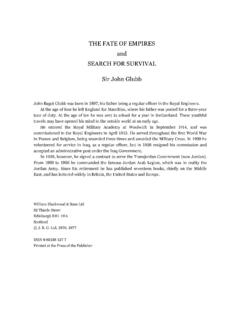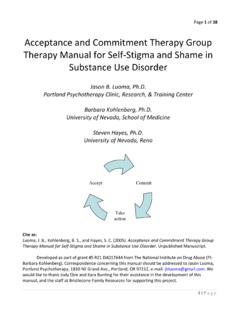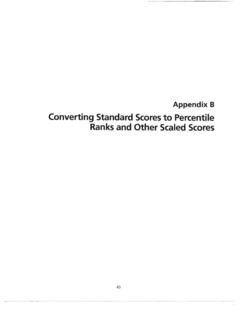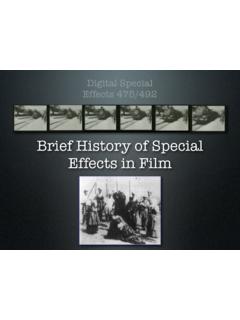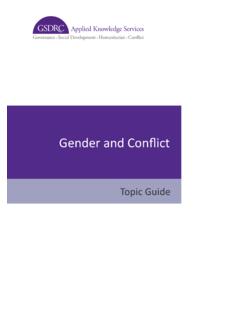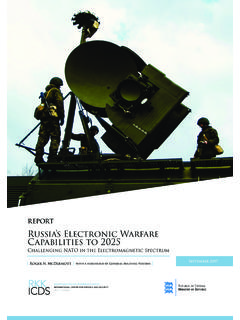Transcription of CONSTRUCTIVISM IN THEORY AND PRACTICE: TOWARD A …
1 CONSTRUCTIVISM IN THEORY AND PRACTICE: TOWARD A BETTER UNDERSTANDING James. M. Applefield, Richard Huber & Mahnaz Moallem The University of North Carolina at Wilmington Watson School of Education 601 South College Rd. Wilmington, NC 28403 Tel: 910-962-3356 Fax: 910-962-3988 2 CONSTRUCTIVISM in Practice and THEORY : TOWARD a Better Understanding Abstract Although CONSTRUCTIVISM is a concept that has been embraced my many teachers over the past 15 years, the meanings that are attached to this term are varied and often inadequately understood.
2 Teachers need to have a sound understanding of what CONSTRUCTIVISM means to evaluate its promise and to use it knowledgeably and effectively. This paper explicates some of the theoretical background of CONSTRUCTIVISM and then presents a detailed example in which a traditional classroom lesson and a constructivist version of the same lesson are described and analyzed. Also discussed are pervasive myths and important instructional issues of this widely advocated and increasingly popular philosophical framework for teaching across the entire K-12 curriculum.
3 3 Introduction Teachers personal theories of learning have long been viewed as having considerable influence on virtually all aspects of teachers decisions about instruction. Not only one s expectations for what learning outcomes are to be valued and sought, but also how one plans ( , organizes, structures and sequences) instruction is directly impacted by one s beliefs about learning. In addition, teachers views of learning guide them as they make decisions about desirable means of implementing and assessing instruction.
4 It is popular today to speak of paradigm shifts, and certainly major conceptual changes do occur in virtually all fields of study. Paradigm shifts bring new perspectives, new conceptualizations and new ways of thinking about a topic, large or small. An important area of study in the philosophy of science is what is referred to as scientific revolutions. Two examples from the natural sciences are the dramatic scientific revolution ushered in by Copernicus conception of the relationship between the sun and earth, and the revolutionary propositions of Darwin s (though less universally accepted, even today) THEORY of evolution.
5 When a novel conception is introduced it always elicits great resistance. Even as a transformation in general thinking and attitudes develops more support and adherents, there will continue to be resistance to the challenge to the existing order, the comfortable, existing ways of viewing the world. For example, the ideas of Galileo and Copernicus were met with disdain, anger and rejection. But, of course, with time, the established physical order of the universe did become accepted and the earlier views came to be seen as the quaint notions of an earlier uninformed era.
6 Ultimately most if not all the ideas of the older paradigm will be discarded; and this is as it should be when the scientific evidence unequivocally points to a more adequate explanation of certain phenomena. As a new paradigm gains respect and acceptance, a gradual and sometimes relatively rapid process of intellectual disassociation occurs. People take flight from the earlier, now prosaic and apparently inadequate ways of viewing the world with a lens that is no longer capable of clearly 4 capturing truth. A new, fresh conceptual rendering of a topic, phenomenon or means of investigation is promoted.
7 A new THEORY is offered to supplant an older THEORY (Kuhn, 1970). Conceptual change in the social sciences differs somewhat from that in the natural sciences (Thagard, 1992) in large part because the social sciences do not yet have a coherent unifying THEORY . Thus major conceptual change within a field may better typify significant shifts in the disciplines of the social sciences and education. Nonetheless, the adoption of different theoretical models and application of different assumptions about the nature of human learning has resulted in raging controversies and paradigm shifts within psychology this century (the ascendancy of and subsequent decline of behaviorism; the rise of cognitivism) and in substantial reconceptualizations of philosophy and pedagogy in education.
8 The field of education has undergone a significant shift in thinking about the nature of human learning and the conditions that best promote the varied dimensions of human learning. As in psychology, there has been a paradigm shift in designed instruction; from behaviorism to cognitivism and now to CONSTRUCTIVISM (Cooper, 1993). Certainly one of the most influential views of learning during the last two decades of the 20th century is the perspective known as CONSTRUCTIVISM . Although by no means an entirely new conceptualization of learner and the process of learner (roots can be traced to John Dewey and progressive educators, to Piaget and Vygotsky and to Jerome Bruner and discovery learning), constructivist perspectives on learning have become increasingly influential in the past twenty years and can be said to represent a paradigm shift in the epistemology of knowledge and THEORY of learning.
9 Fundamental conceptual changes in perceptions of teaching are clearly reflected in the guidelines of the National Council of Teachers of Mathematics and the American Association for the Advancement of Science. The increasingly prevalent literature-based approaches to reading and process approaches to writing both share constructivist roots (McCarthy, 1990); and perusal of current school textbooks reveals the influence of constructivist views of learning 5 (Thompson, McLaughlin, & Smith, 1995). Without question, there are widespread indicators that constructivist views of learning have captured the current zeitgeist in today s educational arena.
10 The term CONSTRUCTIVISM most probably is derived from Piaget s reference to his views as constructivist (Gruber & Voneche, 1977), as well as from Bruner s description of discovery learning as constuctionist (1966). Other terms are also used to refer to constructivist views of learning, including: generative learning (Wittrock, 1985; situated learning and authentic instruction (Brown, Collins, & Duguid, 1989), postmodern curricula (Hlynka, 1991); and educational semiotic (Cunningham, 1992). Even though constructivists cannot be adequately represented by a single voice or an entirely universal point of view, there is a conception of learner and learning that is unmistakable in its central tenets and in its divergence from an objectivist tradition of learning THEORY based on either behaviorism (associationistic models of learning) or cognitivism (the cognitive science of information processing representations of learning).)
